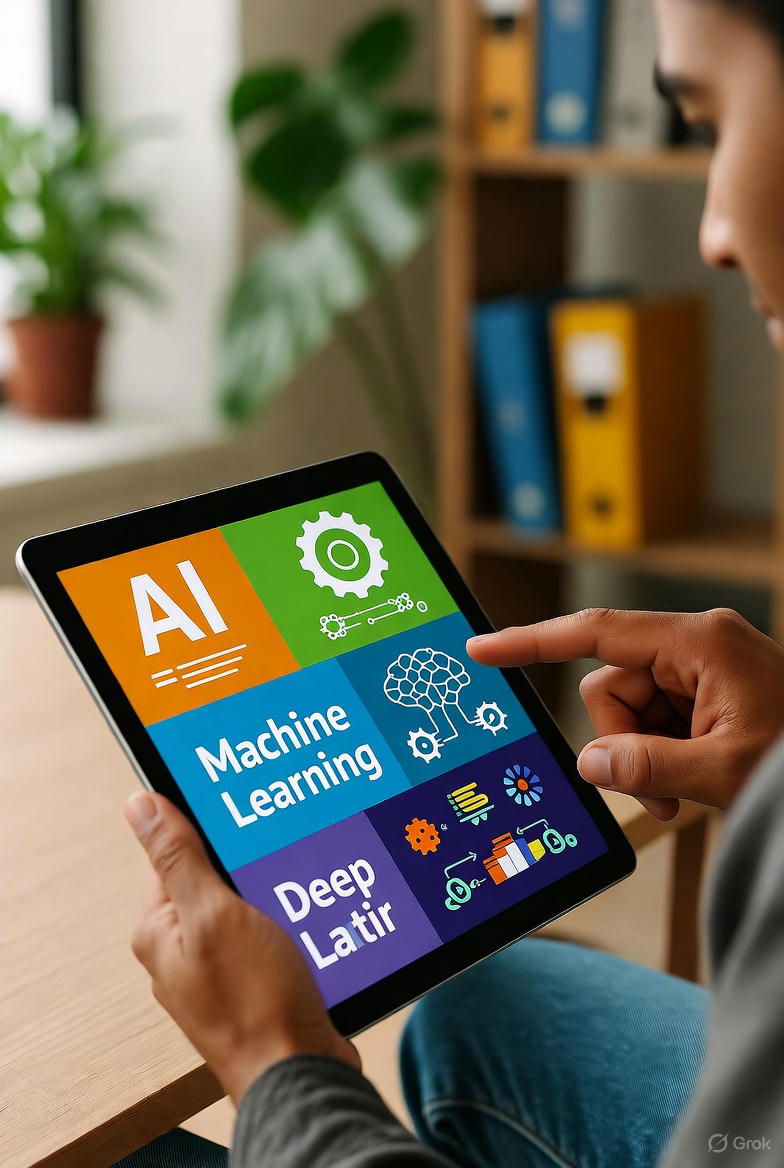In the realm of technology and innovation, few topics spark as much intrigue and confusion as Artificial Intelligence, Machine Learning, and Deep Learning. These buzzwords are often used interchangeably, yet they refer to distinct technologies. Understanding the differences is crucial, whether you are a tech enthusiast, a business professional, or a student navigating this rapidly advancing field. In this blog post, we will delve into “AI vs Machine Learning vs Deep Learning — Explained Simply” to demystify these concepts, exploring how each functions and their impact on our daily lives.
What is Artificial Intelligence?
Artificial Intelligence (AI) is a broad field of computer science focused on creating systems capable of performing tasks that typically require human intelligence. These can include problem-solving, understanding natural language, recognizing patterns, and making decisions. AI has been a subject of intrigue and research since the mid-20th century and has evolved significantly, impacting industries such as healthcare, automotive, and finance.
AI can be categorized into two main types:
- Narrow AI: Also known as Weak AI, it is designed to perform a specific task, such as image recognition or language translation. Examples include virtual assistants like Siri and Alexa.
- General AI: This represents a more advanced form of AI capable of understanding and performing any cognitive task that a human can do. General AI remains largely theoretical and is the subject of ongoing research.
Demystifying Machine Learning
Machine Learning (ML) is a subset of AI that involves teaching computers to learn from data. Unlike traditional programming, where rules are explicitly coded, ML enables systems to learn patterns and make predictions or decisions based on the data they analyze. This learning process allows machines to improve their performance over time without being explicitly programmed for each task.
Machine Learning can be divided into three primary categories:
- Supervised Learning: In this approach, the model is trained on labeled data, meaning that each training example has an input paired with the correct output. It is commonly used in applications like spam detection, where the model learns from known spam and non-spam emails.
- Unsupervised Learning: Here, the model is given input data without corresponding output labels. The system tries to find patterns and relationships within the data. Clustering, which involves grouping similar data points, is a popular technique in unsupervised learning.
- Reinforcement Learning: This technique is based on a system of rewards and punishments. The AI agent takes actions within an environment to maximize cumulative rewards. It’s used in areas like game playing and robotics.
Understanding Deep Learning
Deep Learning is a specialized branch of Machine Learning that mimics the workings of the human brain in processing data and creating patterns for decision making. It uses neural networks, particularly artificial neural networks (ANNs), to make sense of vast amounts of data. These networks have multiple layers — thus the term “deep” — allowing the computer to learn from complex and unstructured data.
Deep Learning has fueled advancements in various fields, including:
- Image and Speech Recognition: Deep learning algorithms can identify objects in images or transcribe spoken language into text with high accuracy.
- Natural Language Processing (NLP): NLP uses deep learning to improve human-computer interactions, evident in chatbots and language translation services.
- Autonomous Vehicles: Self-driving cars leverage deep learning to interpret sensor data, navigate environments, and recognize traffic signs.
AI vs Machine Learning vs Deep Learning: A Simple Comparison
While the terms AI, Machine Learning, and Deep Learning are related, they are not synonymous. Here’s a simple breakdown:
- AI: The overarching domain that includes the creation of intelligent machines capable of performing tasks that typically require human intelligence.
- Machine Learning: A subset within AI focused on algorithms that allow systems to learn and improve from experience.
- Deep Learning: A subset of Machine Learning that uses complex neural networks to model high-level abstractions in data.
Real-World Applications: Harnessing the Power of AI
The impact of these technologies spans a wide array of industries:
Healthcare
AI systems analyze complex medical data to aid in diagnosis and treatment recommendations. Machine Learning models predict patient outcomes, while Deep Learning techniques power advanced imaging analysis tools.
Finance
In finance, AI algorithms detect fraudulent transactions, Machine Learning models make risk assessments, and Deep Learning optimizes trading strategies to maximize returns.
Retail
Personalized shopping experiences are driven by AI technologies that recommend products based on past behaviors. Machine Learning algorithms analyze buying patterns, while Deep Learning enhances customer service through chatbots.
Conclusion
Understanding the nuances between AI, Machine Learning, and Deep Learning helps demystify these powerful technologies and appreciate their individual contributions to innovation and efficiency. As they continue to evolve, their integration into daily life will undoubtedly grow, paving the way for exciting advancements across various industries. By grasping these concepts, you’re better equipped to navigate the future landscape of technology.

